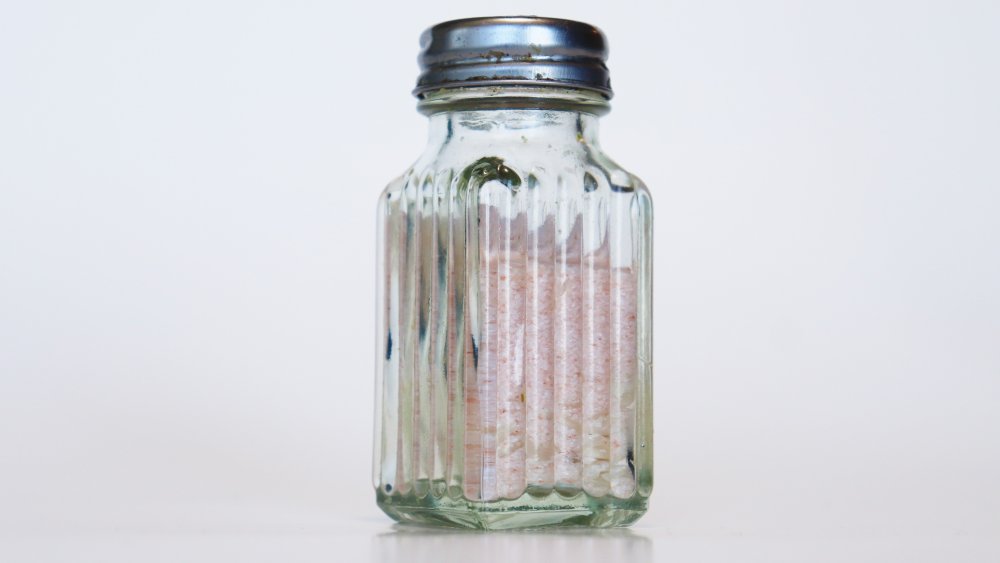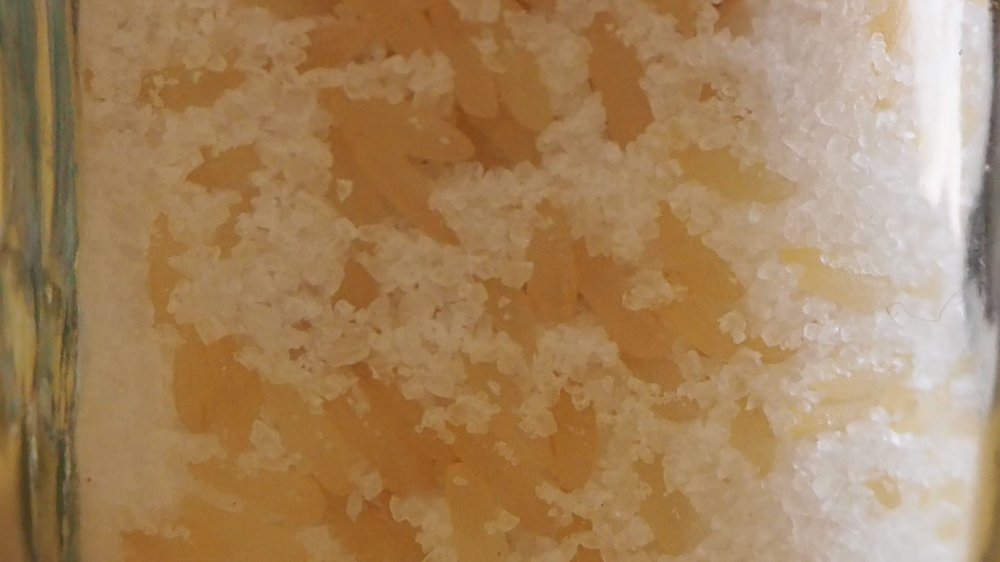Here's Why Restaurants Put Rice In Salt
In the world of late-night diners, there are some things we grow up taking for granted: There must be at least three kinds of pies in a rotating display, apple among them. There must buttermilk pancakes, blueberry pancakes, and chocolate chip pancakes, all available in steaming stacks of three to six. The lighting must either be too bright or too dim. There must be coffee at all hours. There must be ketchup, mustard, and salt and pepper shakers at every table. Oh, and the salt shakers must be filled with rice.
This last requirement is something of an enigma. Especially in cases where rice is nowhere to be found on a diner menu, you have to ask, what's the deal? Why are some restaurants spending extra resources just to fill their salt shakers with grains of the stuff?
How to make rice in your salt shaker work for you
Disappointment at a diner is all the more poignant, unsalted. And it just so happens that rice is the key to a moisture-free, clump-free salt experience (via Thrive Market). Because rice is hygroscopic, which means it absorbs moisture from the air, it will leave your salt vapor-free and flowing through the shaker.
How can you replicate a rice-filled salt shaker at home? It's as simple as adding rice. Gluten-Free Homemaker recommends 1/2 teaspoon per standard salt shaker. NDTV Food suggests using long grain rice so that the rice grains won't fly out of the shaker along with the salt. That's it. Of course, says Mark Facklam, executive chef of the Cooking and Hospitality Institute of Chicago, if you live in an especially humid climate you may need to up your game. Add rice to salt in plastic containers. "You don't get osmosis the way you would in other containers," he told The Chicago Tribune.
If you don't have rice, don't sweat it. NDTV Food advises that beds of dried parsley, soda crackers (changed every 10 to 15 days), coffee grains, dried beans, and cloves can all do the trick, too.

